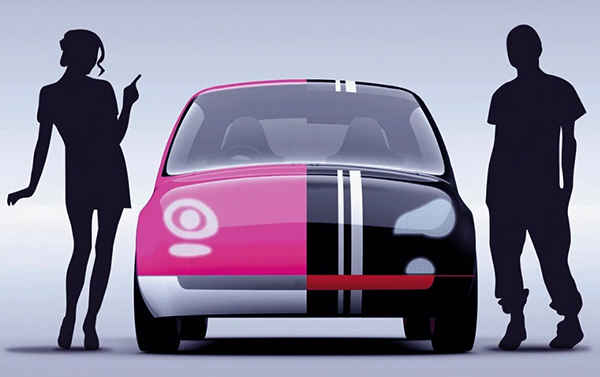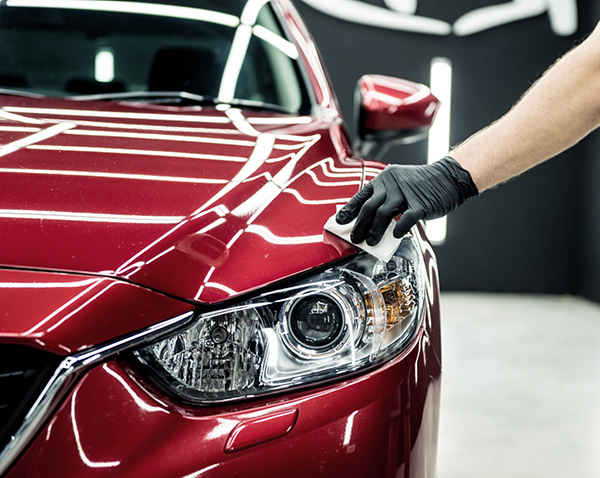What car’s color is the most difficult to maintain?
When selecting a car color, it’s crucial to consider more than just aesthetics; the color you choose significantly affects your vehicle’s maintenance. Some colors demand more effort and care to keep them looking pristine due to factors like dirt visibility, paint durability, and environmental impacts.

Let’s explore the car colors that are particularly tough to maintain, providing deeper insights and practical examples.
Black

Black cars exude a sense of luxury and sophistication, but they are among the hardest colors to keep looking clean and flawless.
Here are the main reasons:
- Visibility of Dirt and Dust:
Black paint highlights dust, dirt, water spots, and pollen more than any other color, requiring frequent washing—sometimes as often as twice a week—to maintain a sleek, polished look.
- Scratch and Swirl Marks:
Any minor scratch or swirl is immediately noticeable on a black surface. Even after a car wash, improper drying techniques or the use of harsh cleaning tools can leave behind swirl marks, making the paint look dull.
- Heat Absorption:
Black cars absorb more heat, which can accelerate the fading process and lead to paint damage over time. This also causes interiors to heat up more, indirectly affecting paint from within, particularly on the roof and hood.
Example:
John, a car enthusiast from Arizona, found his black sedan required washing almost every other day due to the desert dust. He also invested in a high-quality ceramic coating to reduce swirl marks and add an extra layer of UV protection.
Dark Blue

Dark blue cars are stylish and can appear almost black under certain lighting conditions, which adds to their appeal.
However, they also pose specific maintenance challenges:
- Imperfection Visibility:
Like black cars, dark blue vehicles show scratches and swirl marks clearly, requiring meticulous care during washing and drying.
- Frequent Cleaning Needed:
Dust and dirt are visible, especially after rain, necessitating regular washes to keep the car looking clean and fresh.
- Paint Protection Needs:
Dark blue paint tends to show fading and water spots more than lighter colors, necessitating regular applications of wax or paint sealants to maintain its deep, glossy finish.
Example:
Sarah, who drives a dark blue SUV in a coastal town, often deals with salt deposits and water spots. She takes her car for professional detailing every month to protect the paint from the harsh sea air.
Red

Red cars are known for their bold and vibrant look but require diligent maintenance to preserve their color and shine:
- UV Sensitivity:
Red paint is particularly prone to fading and oxidizing under direct sunlight, more so than other colors. This necessitates regular waxing or even UV-resistant coatings to maintain its vividness.
- Shows Dirt and Road Grime:
Red cars easily reveal dirt and grime, especially on lower panels and bumpers. Owners often need to wash their vehicles weekly to prevent dirt build-up from becoming too noticeable.
- Paint Care Requirements:
To keep the color vibrant, regular maintenance with quality paint sealants is essential. In high-sunlight areas, ceramic coatings are recommended to protect the finish.
Example:
Mike, who lives in sunny California, drives a red sports car. To combat fading, he applies a ceramic coating every two years and parks in shaded areas whenever possible to reduce UV exposure.
White

White cars are incredibly popular for their clean, classic appearance and ability to hide minor dirt.
However, they are not without their maintenance difficulties:
- Staining and Discoloration:
White paint can easily stain from environmental factors – example: bird droppings, tree sap, and road tar. These stains are often stubborn and require specialized cleaning products to remove without damaging the paint.
- Visibility of Scratches and Chips:
Although white cars do not show dust as much as darker colors, scratches, chips, and other imperfections are highly visible, especially when the underlying metal or primer is dark.
- Oxidation and Yellowing:
Over time, white paint can begin to yellow or oxidize, particularly in sunny climates. Regular polishing and waxing are essential to keep the paint looking bright and new.
Example:
Emily, who lives near a busy highway, noticed that her white hatchback quickly became stained with tar spots. She uses a clay bar treatment every few months to remove stubborn marks and preserve the paint’s clarity.
Silver and Grey

While silver and grey cars are generally easier to maintain than the colors mentioned above, they have their own set of challenges:
- Water Spot Visibility:
Silver and grey cars can show water spots more visibly than white cars, especially in areas with hard water. These spots can etch into the paint if not promptly removed.
- Subtle Scratches and Swirls:
Although they hide dirt well, silver and grey cars can show subtle scratches and swirls in bright sunlight. Regular waxing can help minimize these issues.
Example:
James, who drives a silver sedan, often notices water spots after rain. He uses a waterless wash solution regularly to keep his car looking shiny without having to do a full wash every time.
News Update: The Future of Car Paint Technology

The automotive paint industry is continually evolving, with new technologies aimed at reducing maintenance challenges for car owners. Recently, self-healing paint has gained attention for its ability to repair minor scratches with heat or sunlight exposure. This innovative technology is already available in some luxury car models and is expected to become more widespread as costs decrease.
Another emerging trend is the use of advanced ceramic coatings and graphene-based coatings, which provide superior protection against UV rays, bird droppings, and environmental contaminants. These coatings not only help maintain the car’s aesthetic but also reduce the frequency of washes and detailing.
Each car color comes with its own set of maintenance challenges. Black and dark blue cars require the most frequent cleaning and care to maintain their appearance, while red and white cars need protection against fading and staining. Even colors like silver and grey, which are often considered low-maintenance, have their own unique issues.
By understanding these challenges, you can choose a car color that aligns with your maintenance preferences and local environmental conditions. With advances in paint protection technology, maintaining your car’s appearance is becoming easier, but the choice of color will always play a crucial role in how much effort you need to invest in keeping your car looking its best.












